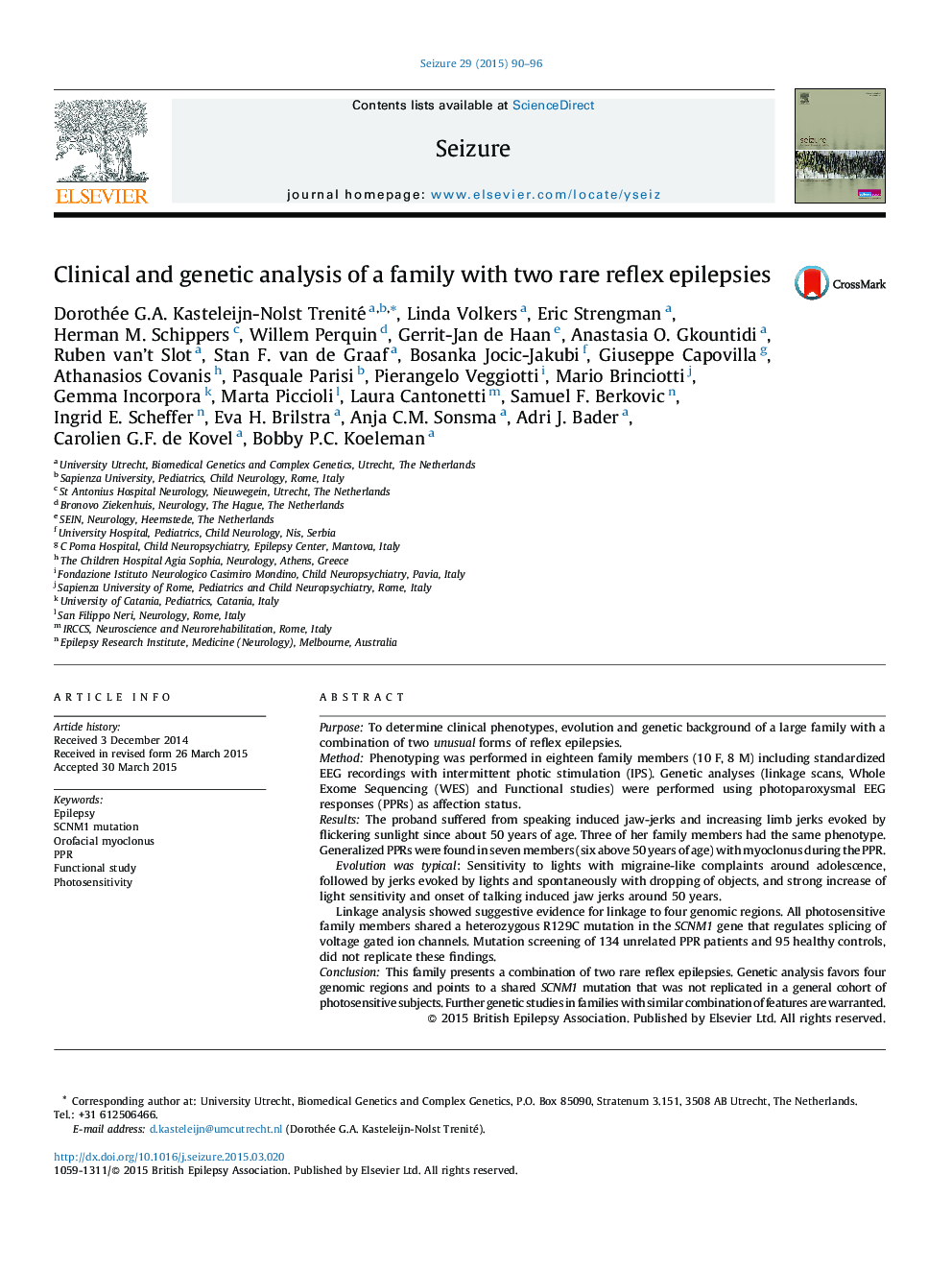| کد مقاله | کد نشریه | سال انتشار | مقاله انگلیسی | نسخه تمام متن |
|---|---|---|---|---|
| 342345 | 548812 | 2015 | 7 صفحه PDF | دانلود رایگان |
• Four members of one family had visual sensitivity combined with talking induced myoclonic jerks.
• Visual sensitivity increased around age fifty with onset of talking induced jaw jerks.
• All photosensitive family members shared a heterozygous R129C mutation in the SCNM1 gene.
• SCNM1 mutation might lead to increased susceptibility to PPR and epilepsy.
PurposeTo determine clinical phenotypes, evolution and genetic background of a large family with a combination of two unusual forms of reflex epilepsies.MethodPhenotyping was performed in eighteen family members (10 F, 8 M) including standardized EEG recordings with intermittent photic stimulation (IPS). Genetic analyses (linkage scans, Whole Exome Sequencing (WES) and Functional studies) were performed using photoparoxysmal EEG responses (PPRs) as affection status.ResultsThe proband suffered from speaking induced jaw-jerks and increasing limb jerks evoked by flickering sunlight since about 50 years of age. Three of her family members had the same phenotype. Generalized PPRs were found in seven members (six above 50 years of age) with myoclonus during the PPR.Evolution was typical: Sensitivity to lights with migraine-like complaints around adolescence, followed by jerks evoked by lights and spontaneously with dropping of objects, and strong increase of light sensitivity and onset of talking induced jaw jerks around 50 years.Linkage analysis showed suggestive evidence for linkage to four genomic regions. All photosensitive family members shared a heterozygous R129C mutation in the SCNM1 gene that regulates splicing of voltage gated ion channels. Mutation screening of 134 unrelated PPR patients and 95 healthy controls, did not replicate these findings.ConclusionThis family presents a combination of two rare reflex epilepsies. Genetic analysis favors four genomic regions and points to a shared SCNM1 mutation that was not replicated in a general cohort of photosensitive subjects. Further genetic studies in families with similar combination of features are warranted.
Journal: Seizure - Volume 29, July 2015, Pages 90–96
